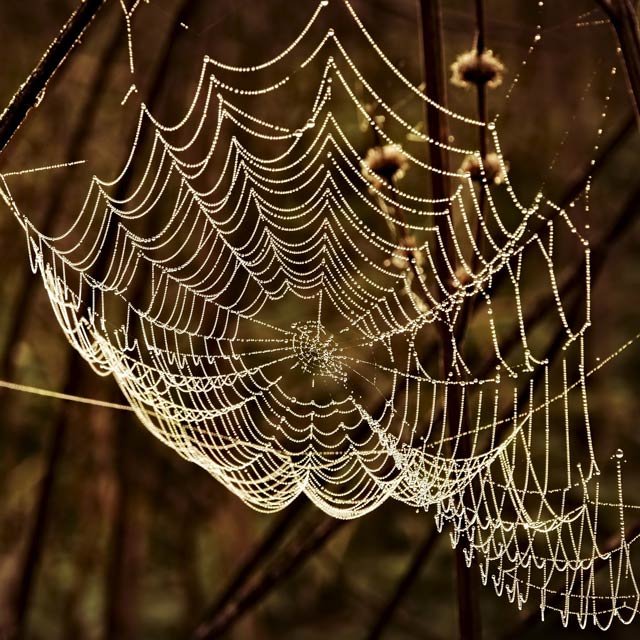Loading...
TOOLKIT

The Spider web giant ear(senses awareness)
LOCATIVE MEDIA SUPERCLUSTER
Improving our connections with people by cultivating a sense of belonging to Nature by Fred Adam & Geert Vermeire
This set of practices is meant to improve our connection with people by opening our senses and feeling the beauty of Nature. But it is also about acknowledging the intelligence of the more than human world, listening to the polyphony of languages, interactions and connections going on around us and with us. We belong to the natural world and we are part of it. Intelligence is not only ours, it is the result of millions of years of evolution. Our ability to develop a greater intimacy with nature is a powerful way to expand our sense of belonging, a shared identity and our love for people because we are all Nature.

DURATION
30 minutes to 1h
The aim of this activity is to introduce the use of the body as a sensory organ to listen to the others. It draws on the intelligence of spiders using their webs as a giant ear to detect the vibrations of the air. This practice is addressing people in difficult health circumstances by showing how we can train our senses and challenge the idea of strictly separate sensory organs, looking into a more holistic approach of our body.
Did you know that spiders do not have ears as we do but they are able to listen to you with their legs! How ? By using their web as a big ear. Let’s build a giant spider web together and use it to listen to each other.
Step 1: Tell the story of the gentle long legs spider, weaving very large webs in the house, patiently waiting for little flies to touch the web. These spiders feel the sounds with their legs and are even able to know who touched their web by the specific vibration each insect has. For example the sound of a fly is not the same as a mosquito, they have their own vibration, a different speed of their wings. They use the web as an ear by understanding the vibration of the strings!
Step 2: Let’s build a web together by pinning the thumbtacks on the wall or by using chairs or furniture to stretch a wool string in a tense manner like the cord of a music instrument.
Step 3: When the web is ready, choose 2 participants to be the long leg spiders, stretching each end of the string between index finger and thumb. Invite the other participants to try to cross the web without touching the string. The long leg spiders will report any change of tension in the string by their voice “i hear you”. You can also use small bells attached to the strings to make it more difficult and combine touching with deep listening.
Step 4: After every participant has played the role of a spider, report with the group on the experience, could you listen with your body ? Was it challenging to cross the spider web without touching the string ?
Step 5: Remember how necessary spiders are in the ecosystem and the importance to acknowledge their intelligence and avoid killing them. Remember that hearing goes beyond our ears, we can feel sound with our body. Clarify that we do touch spiders because some species can bite us and we have to always respect a safe distance with the spiders. Spiders will never try to bite us if we don’t disturb them and we respect their vital space.
tools necessary for the activity: To do this practice you will need a ball of preferably red wool, some thumbtacks and some tiny bells if possible.
evaluation: This transformative experience should provoke in the participants a sense of appreciation for the spiders, shifting the dominant negative perception of these animals. Detect if in the comments, someone is positive about the spider and value this new shift of understanding to the group.
other comments: It is better to do this practice indoors where there is no wind and silence.
references: This practice is inspired by great teachers, Nature of course but also Rich Blundell and the Oika project, Jon Young from the 8 Shields project and the partners from the project No One Forgotten, beyond others. Thank you!
what you can do before or after this exercise

Opening hours
Monday to Friday: 8:00 am - 6:00 pm
Saturday: 8:00 am - 2:00 pm
Sunday: Closed


